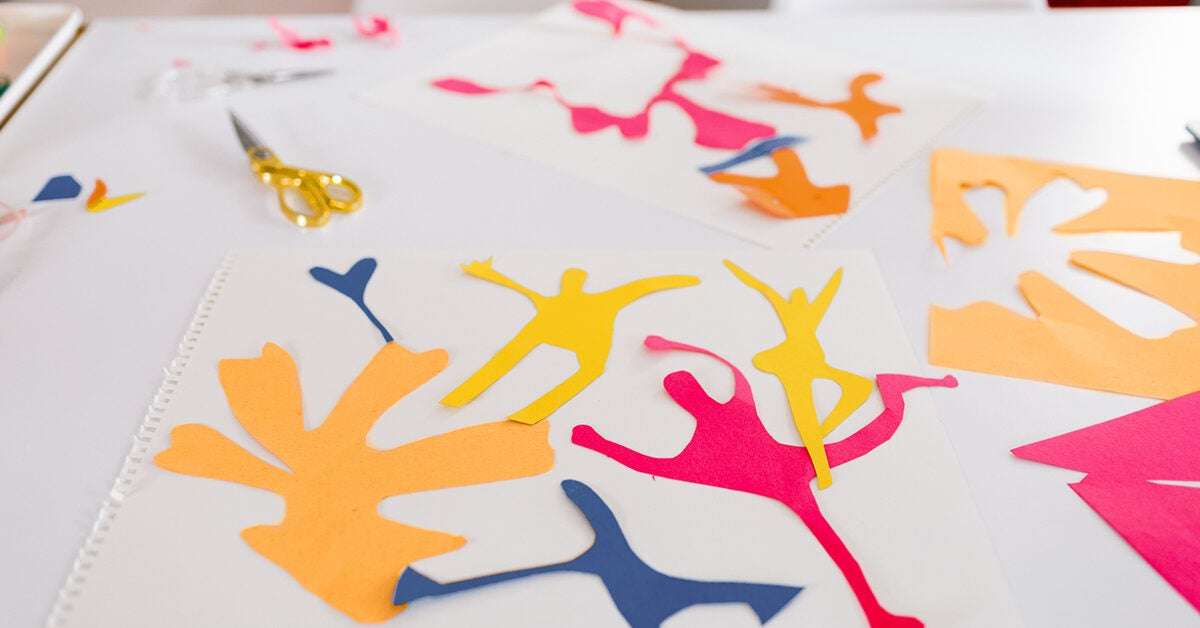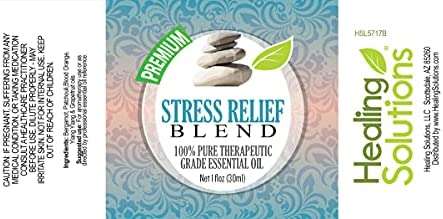Creative expression can be a beneficial form of therapy, especially for those who need help navigating traumatic experiences.
If you’re looking to work through a distressing event, it’s OK if speaking about it gives you pause.
Talking openly about trauma can be difficult. In these situations, there’s a way to process without words.
Art therapy is a highly recommended approach for navigating this part of your journey.
You don’t have to be a seasoned artist to engage in art therapy, nor do you have to worry about things looking good or making sense. It’s all about tapping into some creative expression to dig a little deeper than you could before.
What is art therapy?
Art therapy is a therapeutic method that combines creative expression with talk therapy, all facilitated by a credentialed mental health professional.
The approach aims to help people address emotional issues by using a creative outlet, such as drawing, painting, dance, or music. Art therapists work with people of all ages.
The American Art Therapy Association says the benefits of art therapy include:
- improved cognitive and sensory-motor functions
- development of self-esteem and self-awareness
- emotional resilience
- enhanced social skills
- reduction and resolution of conflicts and distress
Having a talent for the creative arts isn’t necessary for getting something out of art therapy. The goal isn’t creating aesthetically pleasing artwork. It’s about expressing yourself and your story with imagery, movement, or another creative expression.
With the guidance of an art therapist, you may unlock and express memories or feelings that help you process trauma, anxiety, depression, or another mental health condition when the words aren’t easily flowing.
What is trauma?
Trauma is a response to a situation or set of deeply distressing circumstances. Varied situations can be traumatic, such as a car accident, assault, or racial discrimination.
Effects of trauma can include:
- altered sleep patterns
- panic attacks
- becoming withdrawn
- intrusive thoughts
- being easily startled
- hypervigilance
Trauma and the brain
A 2007 study that used neuroimaging found that folks with post-traumatic stress disorder (PTSD) have neurobiological changes — the way the brain functions may change after experiencing trauma.
Some of the consistent changes were connected to emotional memory and Broca’s area of the brain, which is connected to speech. This helps explain the difficulty those who’ve navigated previous trauma can have with discussing, recounting, or processing their experiences.
Saba Harouni Lurie, a licensed marriage and family therapist, certified art therapist, and the owner of Take Root Therapy, recommends art therapy for this very reason.
“We’re really good at building a world with words. We’ve told our stories so many times, and we’re so well versed in using language that it limits us,” she says.
How the body responds to trauma
Lurie speaks to how the body holds onto trauma — even if the mind isn’t aware — also known as somatization.
“Trauma is stored in the body, and the way that we’ve experienced it is not always easy to access verbally. We experience it in images, and art can let us express that experience,” she explains.
Leela R. Magavi, MD, a regional medical director for Mindpath Health, says, “Some adults who have endured sexual abuse and traumatic situations during their childhood have repressed their memories for so long that they do not recall what occurred.
“Art therapy allows them to piece together lost memories and heal, so they can achieve their goals and trust once again in relationships,” she says.
The National Alliance on Mental Health (NAMI) says trauma can “live on” physically after an event. Some of the ways trauma can show up in the body include:
- chronic illnesses or pain
- sleep issues
- frequent headaches or chest pain
Creative expression can aid in slowing some of these responses. “Painting helps quiet intrusive, ruminative thoughts and improve mindfulness, which can assuage pain and stress,” Magavi says.
Creative expression can also slow breathing and bring awareness to the sensations in your body, taking focus away from intrusive thoughts.
Benefits of using art for trauma survivors
Because everyone copes in different ways, traditional talk therapy could prove difficult to encourage someone to open up about traumatic situations.
A 2019 study suggests that art therapy is especially beneficial for survivors of prolonged or recurrent trauma. Also, a 2021 study reports that art therapy may benefit children who have experienced trauma.
Art therapy may also be beneficial for treating anxiety and depression, common symptoms of traumatic experiences, according to a review of studies.
Other methods to help trauma survivors include:
- cognitive behavioral therapy (CBT)
- Eye Movement Desensitization and Reprocessing (EMDR)
- prolonged exposure therapy
People who have had multiple traumatic experiences may have trouble with their verbal memory around the topic or don’t want to recount the experience.
This is another reason Lurie is a proponent of art therapy. It’s easy to get caught in our cycles of what we’ve been able to say occurred rather than leaning into the actual experience of what occurred.
“Some folks that have experienced trauma can find a way to protect themselves by keeping things locked away,” Lurie says.
Including art may also add a calming element for some people, which might help some folks talk about their experiences more easily once their nervous systems are relaxed.
According to Lurie, different art therapy practitioners have different ways of structuring their sessions, but she opens the floor for her clients to use their medium of choice — colored pencils, collage materials, or paint.
After the art is finished, she talks with clients about what came up in the art.
Lurie says that using an alternate method of expression can drive clients to share or even confront their experiences in a way that may feel safer.
Let’s recap
Recounting traumatic experiences can be difficult, especially if you’re navigating PTSD.
Artwork and creative expression can be beneficial. Lurie says art therapy can help people visualize the situation from another angle and see that varied perspectives can help process the experience.
“I think there’s a lot that can be gained from making the art and then exploring what comes up in the art — the themes, the concrete pieces,” Lurie says. “It can give us access to different parts of ourselves that we wouldn’t have been able to otherwise.”
Coloring has especially become instrumental as I recover from PTSD.

Share on Pinterest
When I color during therapy, it creates a safe space for me to express painful feelings from my past. Coloring engages a different part of my brain that allows me to process my trauma in a different way. I can even talk about the most difficult memories of my sexual abuse without panicking.
Yet there’s more to art therapy than coloring, despite what the adult coloring book trend may suggest. They’re onto something, though, as I’ve learned through my own experience. Art therapy, just like talk therapy, has enormous healing potential when done with a trained professional. In fact, for those with post-traumatic stress disorder (PTSD), working with an art therapist has been a lifesaver.
What is PTSD?
PTSD is a psychiatric disorder resulting from a traumatic event. Terrifying or threatening experiences like war, abuse, or neglect leave traces that get stuck in our memories, emotions, and bodily experiences. When triggered, PTSD causes symptoms like re-experiencing the trauma, panic or anxiety, touchiness or reactivity, memory lapses, and numbness or dissociation.
“Traumatic memories typically exist in our minds and bodies in a state-specific form, meaning they hold the emotional, visual, physiological, and sensory experiences that were felt at the time of the event,” says Erica Curtis, a California-based licensed marriage and family therapist. “They’re essentially undigested memories.”
Recovering from PTSD means working through these undigested memories until they no longer cause symptoms. Common treatments for PTSD include talk therapy or cognitive behavioral therapy (CBT). These therapy models aim to desensitize survivors by talking and expressing feelings about the traumatic event.
However, people experience PTSD through memory, emotion, and the body. Talk therapy and CBT may not be enough to address all of these areas. Reliving trauma is difficult. That’s where art therapy comes in.
What is art therapy?
Art therapy uses creative mediums like drawing, painting, coloring, and sculpture. For PTSD recovery, art helps process traumatic events in a new away. Art provides an outlet when words fail. With a trained art therapist, every step of the therapy process involves art.
Curtis is also a board-certified art therapist. She uses art-making throughout the PTSD recovery process. For example, to “help clients identify coping strategies and internal strengths to begin the journey of healing,” they may create collages of images representing internal strengths, she explains.
Clients examine feelings and thoughts about trauma by making a mask or drawing a feeling and discussing it. Art builds grounding and coping skills by photographing pleasant objects. It can help tell the story of trauma by creating a graphic timeline.
Through methods like these, integrating art into therapy addresses a person’s whole experience. This is critical with PTSD. Trauma is not experienced just through words.
How art therapy can help with PTSD
While talk therapy has long been used for PTSD treatment, sometimes words can fail to do the job. Art therapy, on the other hand, works because it provides an alternative, equally effective outlet for expression, say experts.
“Art expression is a powerful way to safely contain and create separation from the terrifying experience of trauma,” writes board-certified art therapist Gretchen Miller for the National Institute for Trauma and Loss in Children. “Art safely gives voice to and makes a survivor’s experience of emotions, thoughts, and memories visible when words are insufficient.”
Adds Curtis: “When you bring art or creativity into a session, on a very, very basic level, it taps into other parts of a person’s experience. It accesses information … or emotions that maybe can’t be accessed through talking alone.”
PTSD, the body, and art therapy
PTSD recovery also involves reclaiming the safety of your body. Many who live with PTSD find themselves disconnected or dissociated from their bodies. This is often the result of having felt threatened and physically unsafe during traumatic events. Learning to have a relationship with the body, however, is critical for recovering from PTSD.
“Traumatized people chronically feel unsafe inside their bodies,” writes Bessel van der Kolk, MD, in “The Body Keeps the Score.” “In order to change, people need to become aware of their sensations and the way that their bodies interact with the world around them. Physical self-awareness is the first step in releasing the tyranny of the past.”
Art therapy excels for body work because clients manipulate artwork outside themselves. By externalizing difficult pieces of their trauma stories, clients begin to safely access their physical experiences and relearn that their bodies are a safe place.
“Art therapists in particular are trained to use media in all kinds of different ways and that might even be helping getting somebody more in their body,” Curtis says. “Just like art can bridge feelings and words, it can also be a bridge back into feeling grounded and safe in one’s body.”
How to find the right art therapist
To find an art therapist qualified to work with PTSD, look for a trauma-informed therapist. This means the therapist is an art expert but also has other tools to support survivors on their recovery journey, like talk therapy and CBT. Art will always remain the centerpiece of treatment.
“When seeking art therapy for trauma, it’s important to seek a therapist who is specifically knowledgeable in the integration of trauma-based approaches and theories,” advises Curtis. “It’s important to note that any intervention done with visual and sensory materials can also be triggering to the client and should therefore only be used by a trained art therapist.”
A trained art therapist will have at least a master’s degree in psychotherapy with an additional art therapy credential. Many therapists may advertise they do art therapy. Only those with certified credentials (ATR or ATR-BC) have gone through the rigorous training essential for PTSD treatment. The Art Therapy Credential Board’s “Find A Credentialed Art Therapist” feature can help you find a qualified counselor.
Takeaway
Using art therapy to treat PTSD addresses the whole experience of trauma: mind, body, and emotion. By working through PTSD with art, what was a terrifying experience that caused lots of symptoms can become a neutralized story from the past.
Today, art therapy helps me deal with a traumatic time in my life. And I hope that soon enough, that time will be a memory I can choose to leave alone, never to haunt me again.
Share on Pinterest
Renée Fabian is a Los Angeles-based journalist who covers mental health, music, the arts, and more. Her work has been published in Vice, The Fix, Wear Your Voice, The Establishment, Ravishly, The Daily Dot, and The Week, among others. You can check out the rest of her work on her website and follow her on Twitter @ryfabian.




